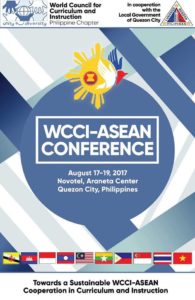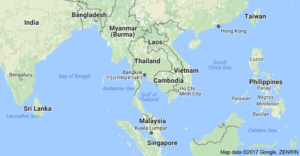Op-Ed : A Philippine ambassador’s perspective on Asean education | Column -The Manila Times |
FAILING to get a speaker from the Lao People’s Democratic Republic, the organizers of the World Council for Curriculum and Instruction-Asean Regional Conference invited me recently as a former ambassador to that country to share my perspective on education there, providing me an opportunity to make certain points about education in Asean as a whole.
My reopening the Philippine Embassy in Vientiane in 1998 was warmly received by the Lao people because they had wonderful memories of the Philippine presence in the 1960s to 1970s, of the Operation Brotherhood and the Filipino musicians.
Filipino contribution in Laos
The Operation Brotherhood remains among the greatest stories of the accomplishments of Filipinos overseas. Although funded by the United States as a propaganda effort to save Indochina from the communists, the face of OB was Filipino. All its doctors, agriculturists, nutritionists and nurses were Filipinos, and they endeared themselves to the people of this poor country by providing free medical and other services regardless of their affiliation or sympathy for any side of the ongoing Indochina War. The OB people had excellent public relations, treating the people of the local community as brothers and being treated in return as brothers. It is said that all parties in the war would warn the OB of any forthcoming skirmish. I am thus not aware of OB suffering any casualty in the war in Laos.
Another group which made an indelible mark in the Lao landscape of the 1960s and 1970s were the Filipino musicians. It seems the Filipinos, who had by then been dominating the Asian musical scene, pioneered band or combo music in Laos. With the liberalization of the economy and society, the Lao PDR allowed musical nightspots to operate once again. Whenever I went to one, the Lao band would stop what they were playing and strike up a masterful rendition of “Dahil Sa Iyo.” Everyone would then know the Philippine Ambassador was around.
Outside of these groups teaching preventive medicine, food security and balancing one’s diet in a time of war, first aid, and kindergarten to the patients’ children, and music to its enthusiasts, I do not think Filipinos were involved too much in education in Laos. Traditional education and education during the French colonial period were not welcoming to Filipinos.
Until the mid-20th century, education in Laos was primarily based in the Buddhist temple school, where the monks taught novices to read Lao and Pali scripts, basic arithmetic, and other religious and social subjects, and morsels of wisdom from animal fables called the Jataka Tales. During the colonial period, the French established a secular education system patterned after schools in France, and French was the medium of instruction after the second or third grade. But the system was largely irrelevant to the vast majority of the population, producing a small elite from the royal family and noble households and colonial civil servants, majority of whom came from Vietnam. In the 1960s there were Filipinos teaching in distant Africa, but they taught in the English-speaking countries.
Lao govt’s achievement in education
To the Lao PDR belongs the credit of establishing a system of universal, secular, primary education. It took over the Royal Lao Government education system established in the 1950s and restructured it. The French system of education was replaced with a Laotian curriculum.
During my nearly four years’ stay in Laos, I was a daily witness of the realization of this commitment of the Lao PDR to universal primary education. I happened to locate the Philippine Chancery right beside a school of primary education. The Chancery grounds seemed to quake with the running and jumping of the children. From my office window, I would be impressed to find boys and, yes, girls entering the school in their immaculate, starched uniforms. There was joy in their voices as they recited or sang their lessons in chorus. There were many times I was asked why I chose such a noisy location. And I would answer back, “The sound of happy children is not noise.” (I had often told myself what fun it must be to teach small children.) In the afternoon on the way home to the Embassy residence, I would pass by a football field full of small boys, and I would have a pleasant impression of a regime seeing to it that children spend and enjoy their childhood as they should.
But I would soon find out that the situation outside Vientiane, the capital, was quite different, and as you go farther away it was more and more riddled with problems.
Logistical problems
The Lao PDR was determined to bring a universal system of primary education to every village in the country. What, after all, does “universal” mean? The problem was that Laos was one of the least developed countries in the world and did not have the material and human resources by itself to support a universal system of primary school education. It was in that economic stage when the dilemma of education and economic development was of the chicken-and-egg sort: There were so many serious needs, and every one of those needs seemed like a priority.
The Lao PDR had only been able to build makeshift or substandard schoolhouses in the villages and to provide every school with only one or two teachers. At times graduates of the primary level were being made to teach the lower grades. And there was a sore lack of teaching materials.
In one dialogue on the needs of education with international partners, I joined the appeal of the host government for donors to contribute generously to the government’s schoolbuilding program. From our experience in the Philippines, I cited the importance of school buildings not only as classrooms but in serving many other purposes of the community, as town hall, election precinct, and evacuation center in case of natural and manmade disasters. I also found the occasion to express the view that among the priorities of education in Laos the training of enough qualified teachers should be the topmost priority because, citing our experience again, competent teachers can teach under the trees or under any tarpaulin cover in the aftermath of a destructive calamity.
Demographics, climatic factors
The lack of logistical resources was compounded by contextual problems, by the natural demographic and climatic characteristics of the country. Laos has an estimated population of 8.3 million divided into 47 distinct ethnicities, which are further subdivided into149 subgroups. These ethnicities speak over 90 distinct native languages. It is well for nation-building that the Lao PDR adopted from the start Lao as a national language and the medium of instruction. It is also very well that when I arrived, English was superseding French as the unofficial second language. (Lao bureaucrats pronounced English vowels the way the Australians do because they went en masse to Australia on scholarships.) Still, it is important, even critical, that teachers in the lowest grades speak the same language as their pupils, otherwise teachers and students cannot communicate with each other.
I found out that some parts of northern Laos were exceedingly cold in winter during a visit up there to see the famous gigantic prehistoric stone jars. There was no heating of any kind and my group of Asean ambassadors in our sweaters and jackets went to sleep under the mattress. The towels and beddings the inn provided looked soiled and used because they were impossible to wash in the cold. But I was disturbed looking at the children, their innocent faces red with frostbite. In the extreme cold, the pupils’ shivering fingers would not be able to hold their pencils to write. That is, if they grew up and reached school age. A group of Filipino nuns volunteering as teachers in the villages informed me that quite a large number of children in those mountains died from the cold. And the good nuns would ask me each time winter approached to drop by their headquarters in neighboring Thailand to pick up a carful of blankets and “smuggle” them across the border. Their charitable activities were duty-free but they would have to undergo a lot of red tape before they could cross the border with those blankets.
As to how seriously the Lao PDR takes its membership in Asean, let me tell you a little story. One day, as I was entering the Chancery, the teacher in the adjoining school saw me and called me. She informed me that the government had put a poster on the wall of the school and her pupils were excited and happy to recognize me in it. It was a poster to celebrate the 25th anniversary of the establishment of the Lao PDR. My picture was in it in connection with Lao PDR’s becoming a member of Asean. It was an indication that the Lao PDR counted its membership in Asean as one of its most important accomplishments in the 25 years of its existence.
In the beginning, the Lao PDR was spared from hosting and chairing the annual summits and ministerial meetings but before long it was doing that. It must have by now chaired the Asean Summit of the Leaders four times.
Since becoming an Asean member, the Lao PDR’s gross domestic product has grown into one of the fastest rates in the world, but because it started from a low base it is for now still a poor country. It has made considerable progress at universalizing primary schooling, but the latest figure stands at less than 80 percent of children of primary school age.
To be sure, the Asean has paid special attention to the development of the Mekong Delta countries. Its slogan “No one should be left behind” (Walang iwanan) refers to the problem of non-inclusiveness of some sectors in the domestic economy but also applies as well to Asean members lagging behind others economically.
Regional solutions to education problems
It is time that we look beyond out navels. It is timely perhaps to search for regional solutions to the problems of the educational sector of the Lao PDR or any other member-country of Asean. I noticed that there is an Asean University Network. There is an Asean Network for Teacher Education. Shouldn’t there also be an Asean Primary School Network?
I believe that the World Council for Curriculum and Instruction should study the impact of the fast advances in communication and information technology, not only logistics-wise but also content- or curriculum-wise. There are reasons to be concerned that these advances serve to erode the values of civilization and further fragment mankind. There is a need more than ever for an education that enables the individual to make informed choices and decisions that redound to the benefit of himself and his fellowmen.
It is timely for the educational sector to consider what it can contribute to the realization in 2025 of the Asean Community. The Asean education ministers are resolved to enhance regional cooperation in education and identified as priorities, among others, promoting Asean awareness among Asean citizens, particularly the youth, and strengthening Asean identity through education. I believe the strengthening of Asean identity must start from an appreciation of the wonderful diversity among the peoples of Asean, including the variety of ethnicities such as the Lao PDR has. Instead of being viewed as obstacles to the unity of Asean, these ethnicities might contribute to that sense of identity. For instance, I have seen many features in common among indigenous cultural groups of a number of countries. I surmise that these were not just brought about by accident. These arise from a common closeness to Nature and its elements. Their generally peace-loving character come from their abiding concern for Nature’s conservation.

<>


NOTE : All photographs, news, editorials, opinions, information, data, others have been taken from the Internet ..aseanews.net | [email protected] |
For comments, Email to : [email protected] – Contributor










